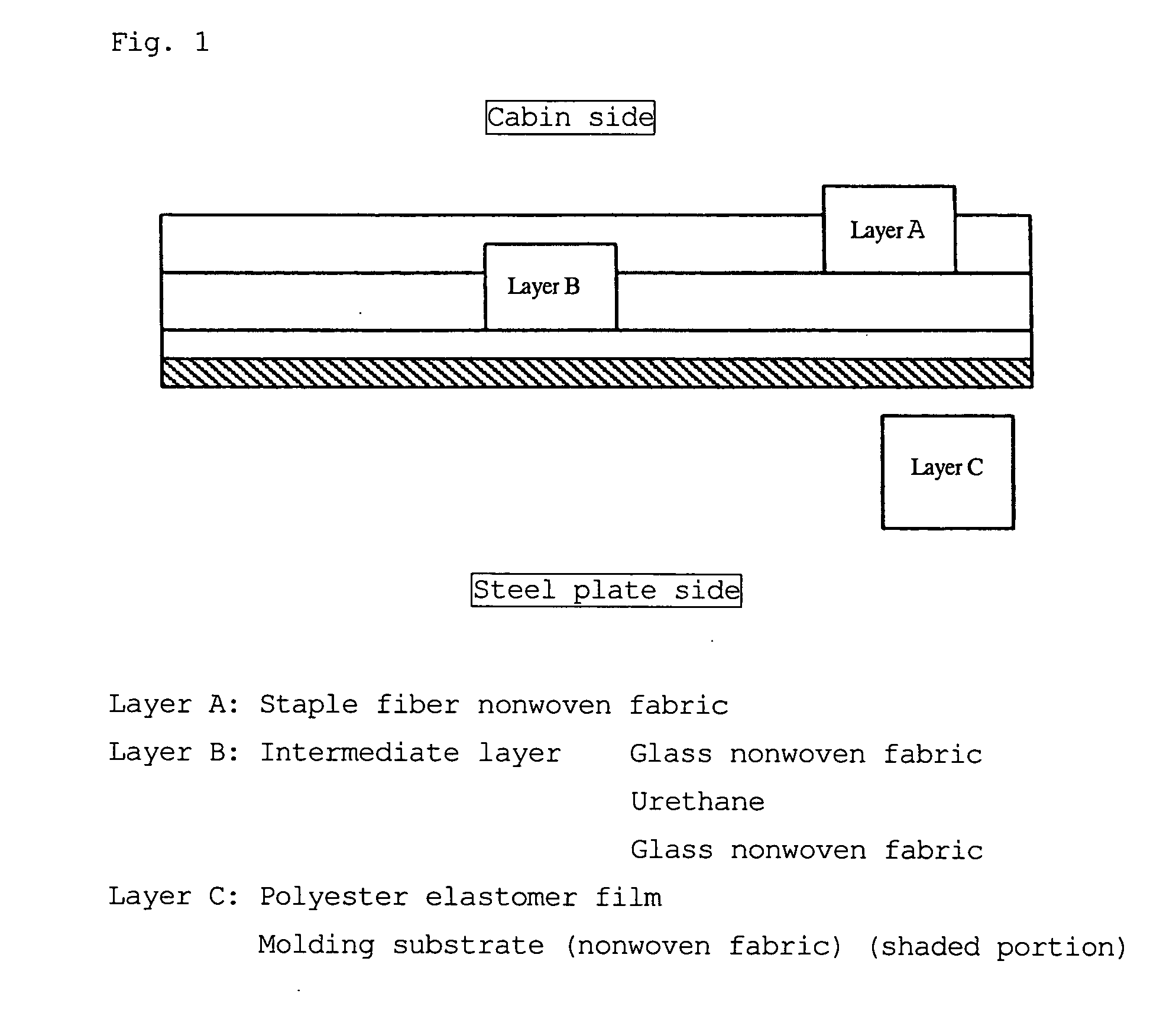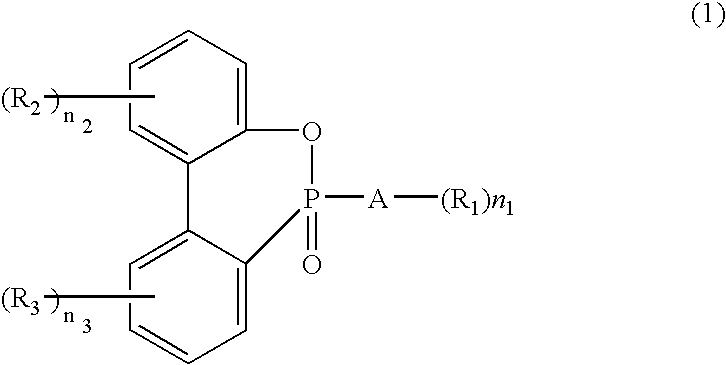Nonwoven fabric for forming vehicle molded articles and use thereof
a nonwoven fabric and vehicle technology, applied in weaving, pedestrian/occupant safety arrangements, vehicular safety arrangements, etc., can solve the problems of poor moldability of polyethylene terephthalate nonwoven fabrics, large amount of cut waste, and difficult recycling, etc., to achieve good moldability, excellent foldability, and the effect of compact folding
- Summary
- Abstract
- Description
- Claims
- Application Information
AI Technical Summary
Benefits of technology
Problems solved by technology
Method used
Image
Examples
examples
[0065] The present invention is described below in more detail with reference to Examples. The invention, however, is not limited thereto.
[0066] The nonwoven fabrics and molded articles obtained in the Examples and Comparative Examples were evaluated according to the following:
(1) Basis Weight (g / m2)
[0067] Ten samples 5 cm wide and 20 cm long were obtained from a test fabric by cutting 5 strips each spaced 5 cm apart in the transverse direction and 5 strips each spaced 5 cm apart in the longitudinal direction. The mean basis weight thereof was calculated.
(2) Thickness (mm)
[0068] Five samples were obtained by cutting strips each spaced 20 cm apart in the widthwise direction. The thickness of the samples was measured using a thickness gauge (with a load of 25 g / cm2 being applied to a load area of 4 cm2).
(3) Apparent Density (g / cm3)
[0069] Apparent density was calculated by the following formula: Apparent density=Basis weight (g / m2) / (Thickness (cm)×100×100)
(4) Tensile Stress...
examples 1-3
[0084] A randomly looped web of 1.5 dtex polyester fiber with a basis weight as shown in Table 1 below was formed by spunbonding using materials as shown in Table 1 and prepared by copolymerization with a phosphorus-containing compound, i.e., (2-carboxyethyl) phenylphosphinic acid in an amount as shown in Table 1. The web was calendered by pressing between rollers heated at 210° C. to provide a molding substrate. A 30 μm polyethylene film was laminated on the molding substrate thus obtained. The resulting laminate was molded together with a polyurethane foam material at 120° C. and used as a lowermost layer to produce an automobile ceiling material. The laminate cut waste of the lowermost layer was recycled as a recycled polyester fiber material felt.
[0085] The laminate of the above-mentioned nonwoven fabric with the above-mentioned film was used also as a pillow portion of an airbag wrap for use in automobiles. The wrap material showed a good foldability for storage.
example 4
[0086] A randomly looped web of 1.5 dtex mixed fiber of polyethylene terephthalate and a polyester elastomer with a basis weight of 20 g / m2 was formed by spunbonding and prepared by copolymerization with a phosphorus-containing compound, i.e., (2-carboxyethyl)phenylphosphinic acid in the amount shown in Table 1. The web was calendered by pressing between rollers heated at 235° C. to provide a molding substrate.
[0087] A 30 μm polyethylene film was laminated on the molding substrate thus obtained. The resulting laminate was molded together with a polyurethane foam material and used as a lowermost layer to produce an automobile ceiling material. The laminate cut waste of the lowermost layer was recycled as a rough polyester fiber material felt.
PUM
| Property | Measurement | Unit |
|---|---|---|
| elongation | aaaaa | aaaaa |
| diameter | aaaaa | aaaaa |
| apparent density | aaaaa | aaaaa |
Abstract
Description
Claims
Application Information
 Login to View More
Login to View More - R&D
- Intellectual Property
- Life Sciences
- Materials
- Tech Scout
- Unparalleled Data Quality
- Higher Quality Content
- 60% Fewer Hallucinations
Browse by: Latest US Patents, China's latest patents, Technical Efficacy Thesaurus, Application Domain, Technology Topic, Popular Technical Reports.
© 2025 PatSnap. All rights reserved.Legal|Privacy policy|Modern Slavery Act Transparency Statement|Sitemap|About US| Contact US: help@patsnap.com



